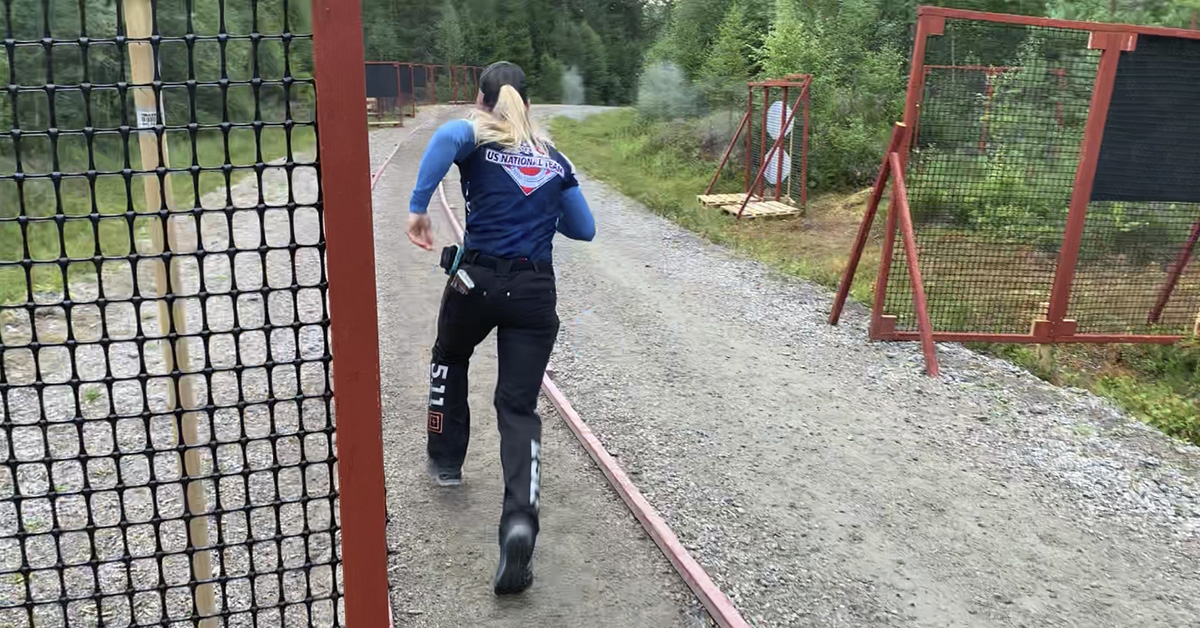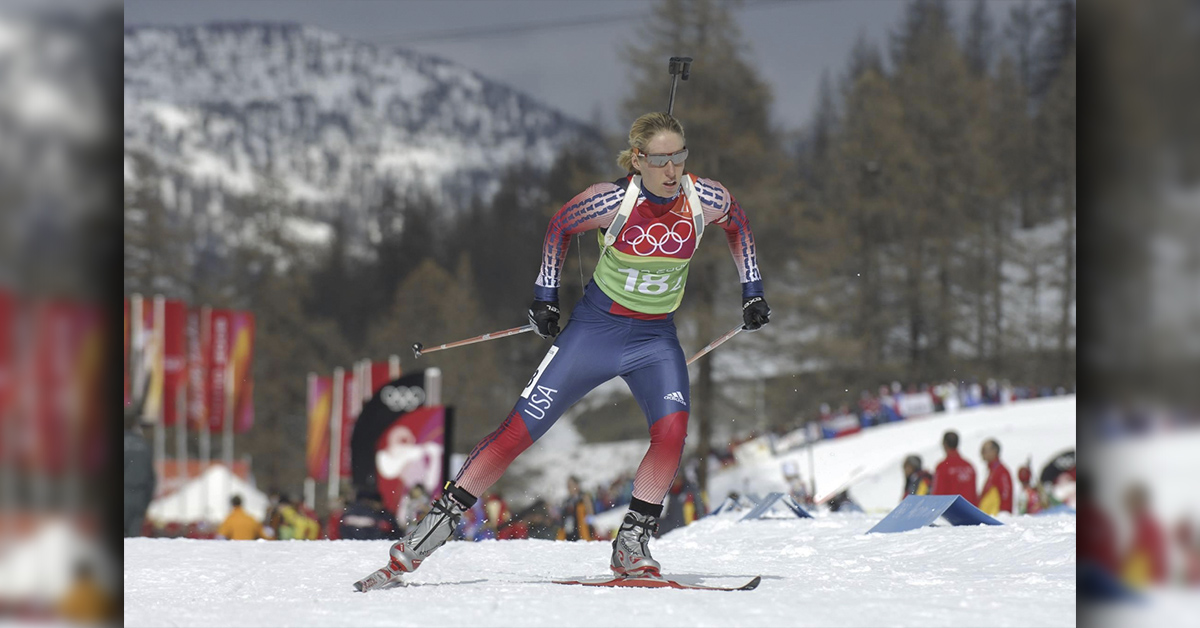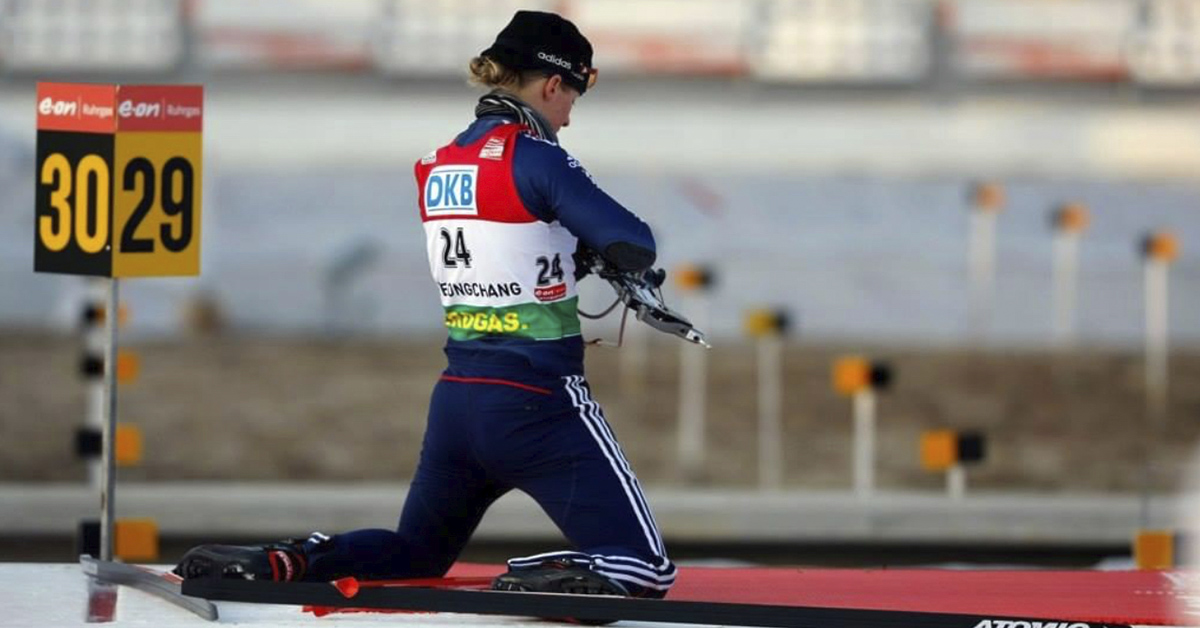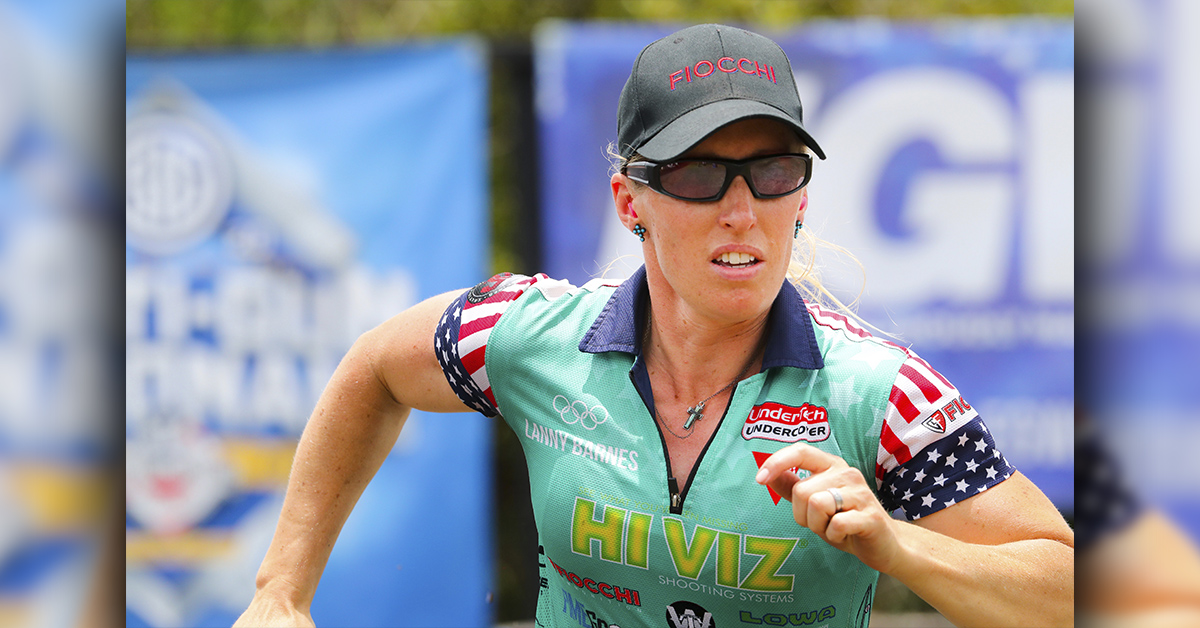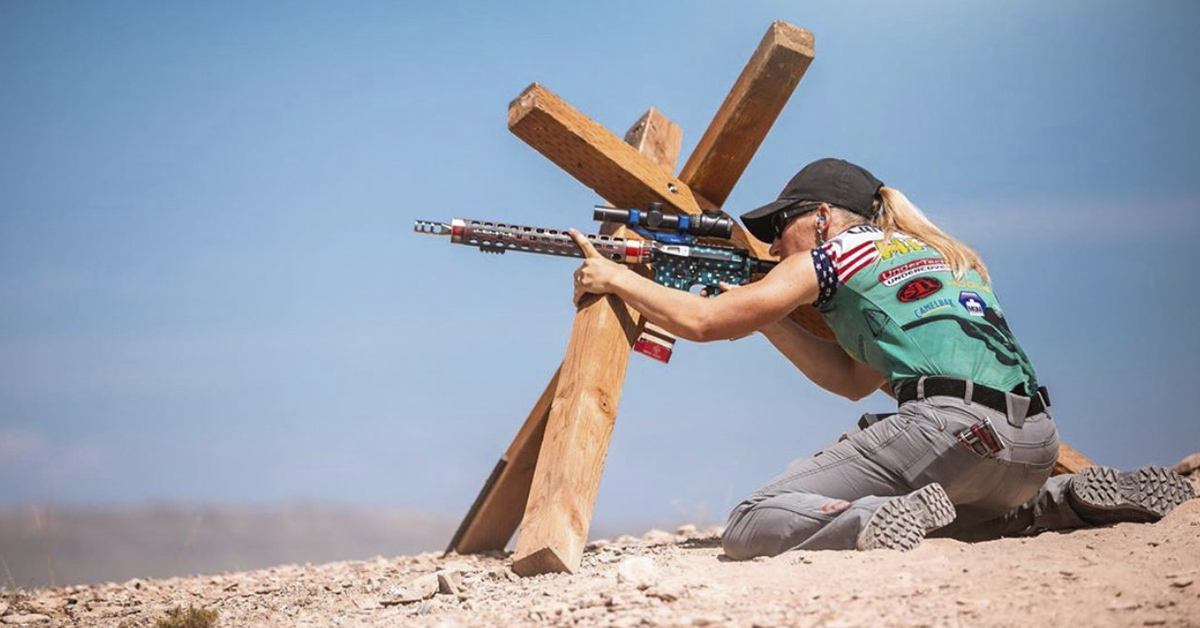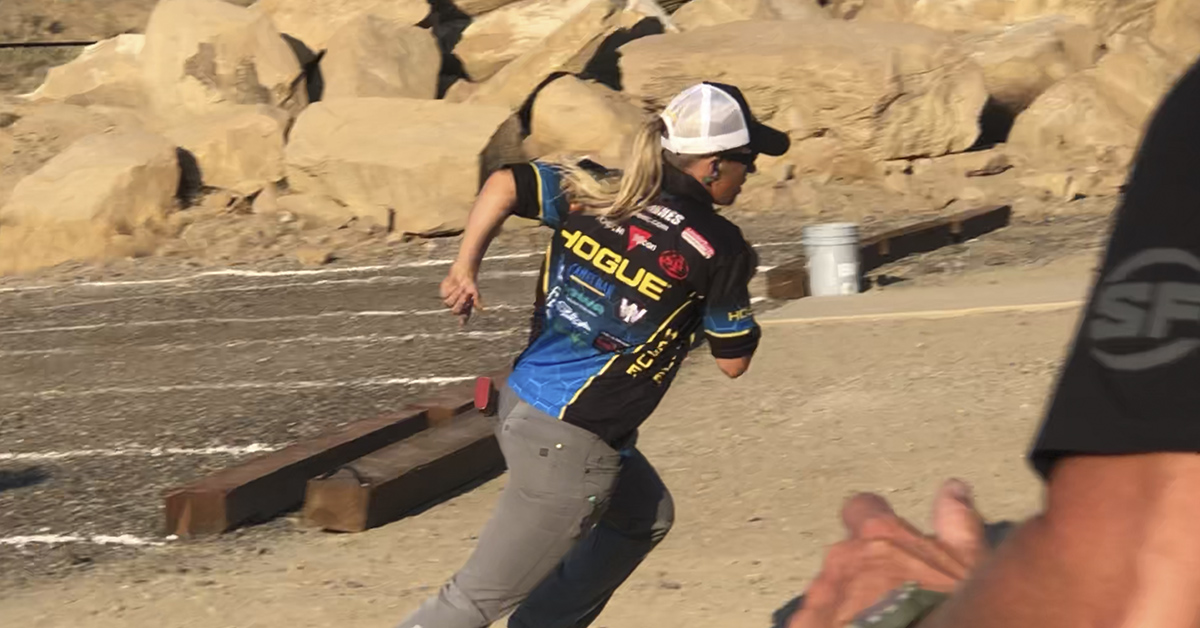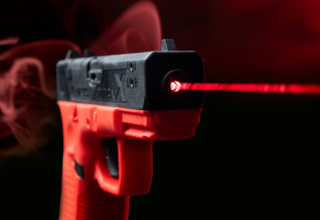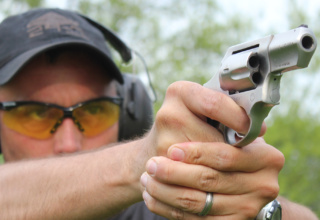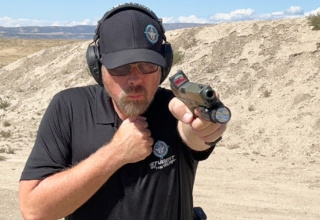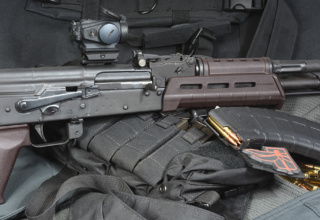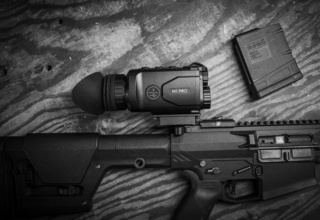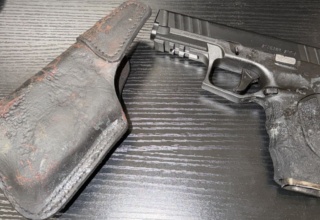In a high-stress defense or hunting situation, the body’s natural responses can upset our shooting performance unless we learn how to work with and regulate an elevated heart rate. Here’s how…
by Lanny Barnes
Shooting with precision and accuracy is a skill that demands a calm and focused mind; however, in real-life scenarios such as hunting, competitions, self-defense situations, LE or military operations, shooters often find themselves faced with elevated heart rates due to stress, adrenaline, or physical exertion. I spent over 15 years learning how to shoot with an extreme heart rate (HR) while competing in the very stressful Olympic Biathlon. Mastering the art of shooting under these conditions is crucial for success.
In this article, we’ll explore the challenges posed by shooting with an elevated HR and techniques to overcome them effectively as well as some common misconceptions.
Understanding the Challenge
When the HR increases, fine motor skills can deteriorate, leading to shaky hands and legs, impaired judgment, and diminished accuracy. This is known as the “fight or flight” response, where the body prioritizes survival over precision and fine motor skills. In shooting, this can manifest as missed shots, slower reaction times, and overall decreased performance; however, the common misconception is that the higher the HR the harder it is to shoot. There is also a misconception that after a short exertion like a sprint, you need to let your HR drop before you shoot. Let me explain to you that this isn’t always the case.
Techniques for Shooting with an Elevated Heart Rate
Heart Rate (HR)
Obviously, after you get above your resting HR when faced with the fight or flight response or physical or mental exertion, HR can have a major effect on your shooting. Let me explain to you why I believe the higher your HR, the easier it is to shoot.
We would try to achieve a HR of 180 bpm (beats per min) when we were racing in the Olympics because it actually made the shooting easier. Think of an EKG. The more time between beats in a lower HR, the more that translates into barrel movement as the thud of your heart drops and lifts your barrel. The higher your HR, the less time between beats and therefore less barrel movement. It translates into a hum.
Consider driving on washboards. When you go slow, you feel the drop of the car on every bump, but if you pick up the pace a little, you skim across the top of the washboards. Don’t get me wrong, you will still have barrel movement, but it is much more manageable. Now, if you can handle the mental challenge of having a HR that high, it does make the shooting easier.
Controlled Breathing
Focus on deep, controlled breaths to regulate your HR and calm your nerves.
Implement the “combat breath” technique. Inhale deeply into your belly for a count of 3-4, hold for 3-4, exhale for 3-4, and hold for 3-4. Repeat as needed to maintain composure. My technique is to breathe in until it hurts the lungs and they can’t hold any more, then let it out and repeat 3-4 times. By doing deep belly breathing, you can trick your mind to think that you are going back into homeostasis (resting state) and your heart rate and breathing rate will decrease. It can also relax your muscles after physical or stressful exertion.
When we are born, we are all belly breathers. Watch a baby in a crib and they breathe through their belly, not their chest. As we age and spend more time upright, we become chest breathers, and our breathing becomes more inefficient and shallower. If you can retrain yourself to breathe through your belly, then you will not only get more oxygen, but you will slow your breathing and heart rate down quicker. Also, by breathing through your belly and not your chest, you can keep your sights on target when shooting from the offhand position. Don’t believe me? Give it a breath.
Mental Preparation/Visualization
Visualize successful shots, help your body achieve muscle memory, and maintain a positive mindset.
Back when the US Olympic Committee was experimenting on us, we used to see how high our heart rate could get during visualizations. The doctors found that the mind couldn’t really tell the difference between a really good visualization and actual training. Visualization is important because it taps into the power of the mind-body connection. When you visualize, you activate the same neural pathways in your brain as you would if you were actually experiencing the things you are visualizing. This means that your brain and body are responding to your thoughts and emotions as if they are real. Our bodies would fire our neurons and synapses to activate our muscles and we could retain up to 60% of the benefits of training simply by having an incredibly realistic visualization. It is the same reason why people wake up out of breath from a vivid dream, why their HR will increase while watching an intense and realistic movie, et cetera. Practice mental rehearsal exercises to simulate shooting scenarios with an elevated HR. This can help desensitize you to the stress response and improve performance under pressure.
Physical Conditioning
Engage in regular cardiovascular exercise to improve overall fitness and endurance.
Incorporate strength training exercises to enhance stability and control during shooting. This is obvious as well — the better shape you are in, not only will your HR recover quicker, but you will be able to have better stamina at work, in a competition, and over several days of stress and physical exertion. I can’t stress enough how important physical conditioning is to help improve your shooting. You may not want to hear this, but cardio is going to do better for you than lifting weights alone. I tell people to do 60% cardio to 40% strength and intensity.
Incorporate physical fitness into your shooting routine. If your range won’t allow it, then do dry practice while lifting weights, running on the treadmill, et cetera. Practice shooting drills that simulate stress-inducing situations, such as timed challenges or shooting competitions.
Positioning
This is all about getting into a stable platform quickly. When possible, take advantage of props or stable objects to help build up as many points of contact as quickly as you can. This is obvious, right?
Think of Olympic sprinters. They sprint the 100m then, when they finish, they throw their hands in the air and jump around unexhausted and still able to breath normally. Then they settle down and start giving interviews on how the race went, and the more they talk the more their BR increases. This is because, when doing a short sprint, your body uses your anaerobic system, which is purely sugar stores. But once we use those stores up, our body must replace them as quickly as possible to get back to homeostasis (resting state) and to allow the body to be ready for another burst if need be.
After you finish a short burst, your body kicks into using its aerobic system to use oxygen to convert the lactic acid you just produced from consuming that sugar back into sugar. To do this, it needs to speed up your HR and BR until it gets enough oxygen to get you back to resting state. So, essentially, after a sprint, your heart rate will continue to rise until your body recovers. That is why as soon as you are done with your sprint, it is easier to shoot than waiting the approximately 1-2 minutes while your HR and BR increase before they actually decrease. Make sense?
So, the faster you can get into a solid position and get a shot off, the easier it is going to be.
Conclusion
Shooting with an elevated HR presents unique challenges that require a combination of physical skill, mental resilience, and training to overcome. By implementing the techniques and strategies outlined here, shooters can improve their performance under stress and enhance their overall effectiveness in dynamic shooting situations.
Remember, mastery comes through consistent practice, adaptability, and a commitment to continuous improvement. Think outside the box, push yourself physically and mentally, and you will see improvements in your shooting.

